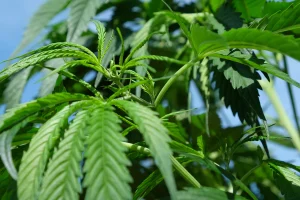Introduction: Deciphering the Enigma of Kratom Headaches
Kratom, a tropical tree native to Southeast Asia, has garnered attention for its purported therapeutic benefits and recreational use. However, amidst its popularity, some users have reported experiencing kratom headaches, a phenomenon that warrants further investigation and understanding. In this comprehensive guide, we delve into the intricacies of kratom headache, exploring the potential causes, symptoms, and strategies for finding relief.
What is Kratom?
Before delving into the specifics of kratom headaches, it’s essential to grasp the basics of this botanical substance. Kratom, scientifically known as Mitragyna speciosa, belongs to the Rubiaceae family, which also includes coffee plants. Indigenous to regions like Thailand, Indonesia, and Malaysia, kratom has been traditionally used for its stimulant and analgesic properties.
The Mechanisms Behind Kratom’s Effects
Kratom contains active compounds called alkaloids, with mitragynine and 7-hydroxymitragynine being the most prevalent. These alkaloids interact with opioid receptors in the brain, producing a range of effects that can vary depending on dosage and individual physiology. Kratom is known to exhibit both stimulant and sedative effects, making it a versatile substance with diverse applications.

Understanding Kratom Headaches
While many users report positive experiences with kratom, some individuals may encounter kratom headaches, characterized by throbbing or pulsating pain in the head. These headaches can occur shortly after ingesting kratom or may manifest as a lingering discomfort over time. Understanding the potential causes of kratom headaches is crucial for mitigating their occurrence and finding effective solutions.
Potential Causes of Kratom Headaches
Several factors may contribute to the development of kratom headaches, including:
- Dehydration: Kratom has diuretic properties, meaning it can increase urine production and potentially lead to dehydration if adequate fluids are not consumed.
- Strain Specificity: Different kratom strains may contain varying levels of alkaloids, leading to differences in potency and potential side effects.
- Dosage: Excessive kratom consumption or high doses may overwhelm the body’s tolerance threshold, resulting in adverse reactions such as headaches.
- Quality and Purity: The quality and purity of the kratom product can influence its overall safety and potential for side effects. Contaminants or adulterants may exacerbate headaches and other adverse reactions.
Symptoms of Kratom Headaches
Kratom headaches may manifest with a range of symptoms, including:
- Throbbing or Pulsating Pain: Headaches associated with kratom use often present as a dull, persistent ache or a throbbing sensation in the head.
- Sensitivity to Light and Sound: Some individuals may experience heightened sensitivity to light (photophobia) and sound (phonophobia) during a kratom-induced headache.
- Nausea and Dizziness: Kratom headaches may be accompanied by feelings of nausea, dizziness, or lightheadedness, further exacerbating discomfort.
Strategies for Finding Relief
If you’re experiencing kratom headaches, several strategies may help alleviate symptoms and promote overall well-being:
- Stay Hydrated: Ensure adequate hydration by drinking plenty of water throughout the day, especially when consuming kratom.
- Manage Dosage: Practice responsible kratom use by carefully measuring dosage and avoiding excessive consumption.
- Rotate Strains: Consider rotating between different kratom strains to prevent tolerance buildup and minimize the risk of adverse effects.
- Supportive Measures: Utilize over-the-counter pain relievers, rest, and relaxation techniques to alleviate headache symptoms.
Conclusion: Navigating the Complexities of Kratom Headaches
In conclusion, kratom headaches represent a nuanced aspect of kratom use that warrants attention and understanding. By elucidating the potential causes, symptoms, and relief strategies associated with these headaches, individuals can make informed decisions about their kratom consumption and prioritize their well-being.






More Stories
Frosty Delight: Unraveling the Lemon Gelato Strain
Anavar Cycle Potential: Dosage Recommendations for Men and Women & Identifying Authentic Oxandrolone
Unlocking the Future: Marijuana Strain AI for Personalized Recommendations